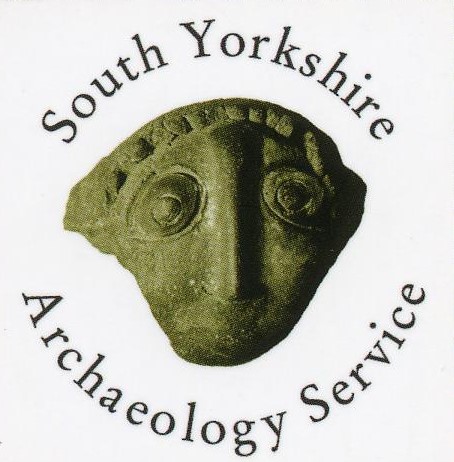Upper Coppice Wheel (Rivelin Waterpower Sites)
Location/Address
Immediately downstream of Rails Road, Rivelin Valley, Sheffield S6 5SQ
Type
Other site, structure or landscape
Assets that cannot fit any of the other categories. This category includes sites of archaeological interest, where the original form and function may not be apparent without the use of archaeological techniques and interpretation.
Description
Former water-powered grinding Wheel and water management system. One of the Rivelin Waterpower Sites
Upper Coppice Wheel and associated water management system are the remains of a water-powered site that was in use from mid-18th century until the early 20th century. It was initially used for cutlery grinding and later wire drawing. Few traces of the buildings remain.
The Upper Coppice water management system extended to the east and west of the site of the former mill buildings, feeding from the adjacent river. The short head goit is culverted under the path by the weir and joined here by the tail goit from Rivelin Corn Mill. The small mill dam is silted and overgrown, with a stream flowing through. Water can usually be seen cascading into the wheel pit and then flows directly into the head goit of Second Coppice Wheel rather than back into the river.
The site is owned by Sheffield City Council and there is open access. A public footpath (the Rivelin nature and heritage trail) passes the site between the mill ddam and the river. The trail can be accessed from various points along Rivelin Valley Road, and surrounding footpaths.
The Upper Coppice weir is immediately below the Grade II listed Packhorse Bridge, which dates from about 1775 and carried the packhorse track from Crosspool to Stannington.
A marker post installed at the site by Rivelin Valley Conservation Group gives a brief history and links to a website where further information and pictures can be found.
Upper Coppice Wheel is one of the 20 water-powered mills built in the Rivelin Valley. This sequence of Rivelin mills and mill dams forms an essential part of Sheffield’s heritage. They also have a broader national and even international significance in relation to the history of the Industrial Revolution in Sheffield.
Further information and pictures of Upper Coppice Wheel and other sites in the Rivelin valley can be found at https://rivelinvalley.org.uk/rivelin-trails-2/. See also the books ‘Walking the Rivelin’, by Sue Shaw and Keith Kendall (6th edition, 2019, Rivelin Valley Conservation Group) and ‘Water Power on the Sheffield Rivers’, by C. Ball, D. Crossley, N. Flavell (Editors), (2nd Edition (2006), South Yorkshire Industrial Society).
Statement of Significance
Age
Built between 1736 (lease) and 1761 ("newly built"). In use from mid-18th century until the early 20th century, but out of use by 1905.Rarity
This asset is an integral part of an especially rare system of waterpowered sites, described in more detail in the Rivelin Waterpower Sites asset.Architectural and Artistic Interest
This site is one of a group that collectively and individually demonstrate the construction techniques and interrelationships of waterpowered sites, described in more detail in the Rivelin Waterpower Sites asset. The short head goit is culverted under the path by the weir and joined here by the tail goit from Rivelin Corn Mill. The outfall flows directly into the head goit of Second Coppice Wheel rather than back into the river. These are techniques used to enable high density exploitation of a river that is especially characteristic of upland streams such as those in Sheffield during a period of unprecedented industrialisation.Group Value
This site contributes to the significance of the Rivelin Waterpower Sites asset and to the waterpower sites on other rivers in the city, and is integral to an understanding of the role and impact of waterpower in Sheffield. Upper Coppice and Second Coppice Wheels have additional group value, owing to the use of a single weir for both sites. Rivelin Mill and Upper Coppice Wheel also have group value as the tail goit of the former feeds the head goit of the latter directly. There is further group value with the Grade II listed Packhorse Bridge, which dates from about 1775 and carried the packhorse track from Crosspool to Stannington, and which would have been a crucial connection for the nearby industrial sites prior to the creation of the turnpike in 1824.Historic Interest
This site is of historic interest in its illustration of the uses of waterpower, central to the reputation fame and identity of Sheffield; the many and varied uses for waterpower; the industrial development of the area; the impact of communications and topography; the lives and trades of working people; and the practice and policy of landowners, This is described in more detail in the Rivelin Waterpower Sites asset.Archaeological Interest
This site has the potential for underground remains that with further investigation could reveal their development over time, including changes of use and the evolution of industrial processes and construction techniques. Because the sites were not overtaken by later industrial development, any remains are likely to be relatively intact.Landmark Status
The Rivelin Valley is an extremely popular leisure destination for local people, largely defined by its waterpower remains, including this site.Date Listed
15 Aug 2022
Last Updated
19 Apr 2022
Comments and Feedback
Do you have any questions or more information about this record?



.jpg)

